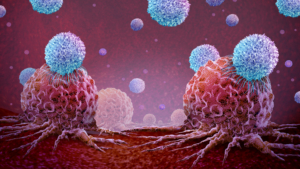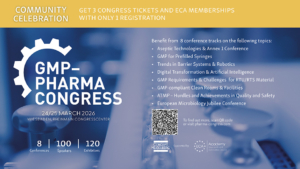
We need predictive safety biomarkers
Every year, drug developers lose billions of euros because of late-stage clinical or postmarking safety problems with drugs. A recently kicked-off IMI consortium now wants to qualify a set of safety biomarkers that allow for the prediction of drug-induced injury of kidney, liver, vasculature, CNS, and pancreas. European Biotechnology spoke with Dr Michael Merz, the coordinator of the TransBioLine Project, and consortium member Prof Dr Stefan Wnendt about the plans and impact of the project.
EuroBiotech_ What’s the value of safety biomarkers indicating drug-induced organ failure preclinically or in Phase I studies?
Merz_ If you, for example, take drug-induced liver injury, it’s potentially deadly; it rarely occurs, and mostly, you will detect the first cases after market approval. Even a Phase III failure could mean a waste of 1bn or more. So, if we had bio-
markers sensitive and specific enough to detect DILI during clinical development, we’d have the option either to stop the programme or to establish biomarker-based therapy monitoring.
Wnendt_ Safety biomarkers that are accepted or qualified by regulatory authorities could not only guide a timely stop of a programme, but also improve risk assessment, i.e. continued clinical testing of a promising drug candidate despite unspecifically elevated blood levels of standard liver markers.
Merz_ Another example would be: if you have a highly efficient drug with proven liver toxicity, availability of a biomarker-guided therapy monitoring could impact market approval significantly. Currently, we don’t have any qualified biomarkers for vascular injury. So, mostly preclinical programmes in which we see a vasculitis are killed, even though it is not clear if vasculitis would also occur in humans.
EuroBiotech_ What efforts have been made historically to qualify innovative safety biomarkers?
Merz_ Standard renal biomarker blood levels don’t increase until 50% of the kidney is damaged. So, industry and regulatory authorities sought ways to improve the situation. In 2006, they established the Predicted Safety Testing Consortium under the supervision of the FDAs Critical Path Institute. The PSCT merged 15 Big Pharma companies with representatives from the FDA, EMA, PMDA (Japan), and 150 scientific experts, in order to share and qualify novel safety biomarkers as proof for clinical safety. At the end of 2008, the very first kidney injury biomarkers designed to monitor kidney function were passed to the FDA for qualification. In 2012, the FDA approved Clusterin and RPA-1 for preclinical use. In 2018, qualification was extended to six biomarkers for use in Phase I studies: albumin, b2 microglobulin, clusterin, cystatin C, KIM-1, total protein, and trefoil factor-3.
Wnendt_ Based on the work of the PSTC, IMI launched the SAFE-T project in 2009, including experts who pioneered biomarker qualification within the PSTC. The goal of SAFE-T was to explore, validate, and qualify novel biomarkers for drug-induced liver, kidney, and vascular injury. However, SAFE-T didn’t achieve full qualification, but received regulatory support for subsets of biomarkers to be used in an exploratory setting. At our CRO MLM Medical Labs, we can already see that companies use these not-yet qualified
biomarkers to generate evidence for preclinical and clinical safety.
EuroBiotech_ So, full qualification is where the new TransBioLine project comes into play?
Merz_ Exactly: the IMI TransBioLine project is a follow-up to the SAFE-T project that ended in 2015. However, the new project will go far beyond the scope of SAFE-T. TransBioLine’s primary goal is to achieve full qualification for the biomarkers that did not acquire this within SAFE-T. Additionally, we will explore, validate, and hopefully qualify novel markers for drug-induced pancreas and CNS injury. Beyond drug-induced toxicity, TransBioLine will explore the clinical utility of some
biomarkers in acute or chronic diseases, such as non-alcoholic steatohepatitis). We will also build a liquid biopsy biobank from patients, in order to find out if certain microRNA expression profiles can be linked to toxicity mechanisms. These miRNA assays will be conducted by TaMiRNA of Vienna, and at the University of Zurich.
EuroBiotech_ That’s quite a lot to do. So, whats your budget?
Merz_ It’s 28m over the next five years, 14m of which will represent in-kind contributions for expertise, staff, and samples from EFPIA members Pfizer, Roche, MSD, Novartis, Janssen, Sanofi, and Lilly. The other 14m will be provided as cash contribution to finance the thirteen universities and university hospitals, as well as the seven SMEs participating in the project.
EuroBiotech_ Is TransBioLine still open for external input, i.e. biomarkers that most recently were reported to reflect kidney function, such as uromodulin or proenkephalin, vascular integrity, such as active adrenomedullin, etc?
Merz_ Our budget is small and there will be no chance for biomarkers that come without an assay. However, if data are convincing, we we could possibly try to include the latest innovations with appropriate sensitivity and specificity.
EuroBiotech_ How will TransBioLine validate the new biomarkers in practice?
Merz_ TransbioLine will conduct clinical studies at the academic centres participating. While about 150 to 200 patients with DILI will be enrolled, cohorts of patients with drug-induced kidney injury will be significantly smaller, due to use of an adaptive trial design. For DILI, we did have exploratory data, so will focus on generation of confirmatory data as well, as we did with DIKI. For drug-induces pancreas and CNS injury, it’s ambitious to get full qualification within the five years that TransBioLine will be running.
Wnendt_ We will analyse 500 to 2,500 samples per organ system and 50 biomarker candidates for all organ systems. Another unique feature of TransBioLine is that we will use highly advanced technologies, such as the platform of Signatope, an interesting start-up from Reutlinen, Germany, for assay read-out, i.e. for the pancreatic injury markers KIM-1, MCSF1R, and Smoothelin B. Signatope’s technology, which combines proteolytic digestion and antibody-based enrichment of the resulting peptide fragments with subsequent mass spectrometry analyses, allows for measuring safety biomarkers translationally in rodents, non-rodents, and humans.
EuroBiotech_ What about inter- and intralaboratory reproducibility and SOPs for biobanking?
Wnendt_ All assay results will be analysed centrally. SOPs for blood drawing and biobanking have been established.
EuroBiotech_ Where do expect to be in five years?
Merz_ We hope to find and qualify as many appropriate safety biomarkers as possible. Following biomarker qualification, we expect companies to automate assays with diagnostic utility in medically undermet acute and chronic disease settings.
Dr Michael Merz (University of Zurich), a clinical pharmacologist by training, has spent more than 20 years in drug development, particularly in drug safety. He is the Coordinator of the TransBioLine project. Dr. Merz joined Novartis Pharma in Basel in 1998 and held various scientific and management positions, mainly in preclinical and clinical drug safety. He has been the project coordinator for the EU’s IMI SAFE-T consortium.
Prof Dr Stephan Wnendt is the CEO of MLM Medical Labs, which is involved in TransBioLine. Wnendt started his industry career in 1991 at Grünenthal in R&D. Subsequently, he held senior positions in diverse pharma, medtech, and biotech companies in Germany and the US. In 2008 he joined MLM.
First published in European Biotechnology Mgazine, Summer 2019 edition


 freshidea / Adobe Stock
freshidea / Adobe Stock
 adobe.stock.com - ipopba
adobe.stock.com - ipopba